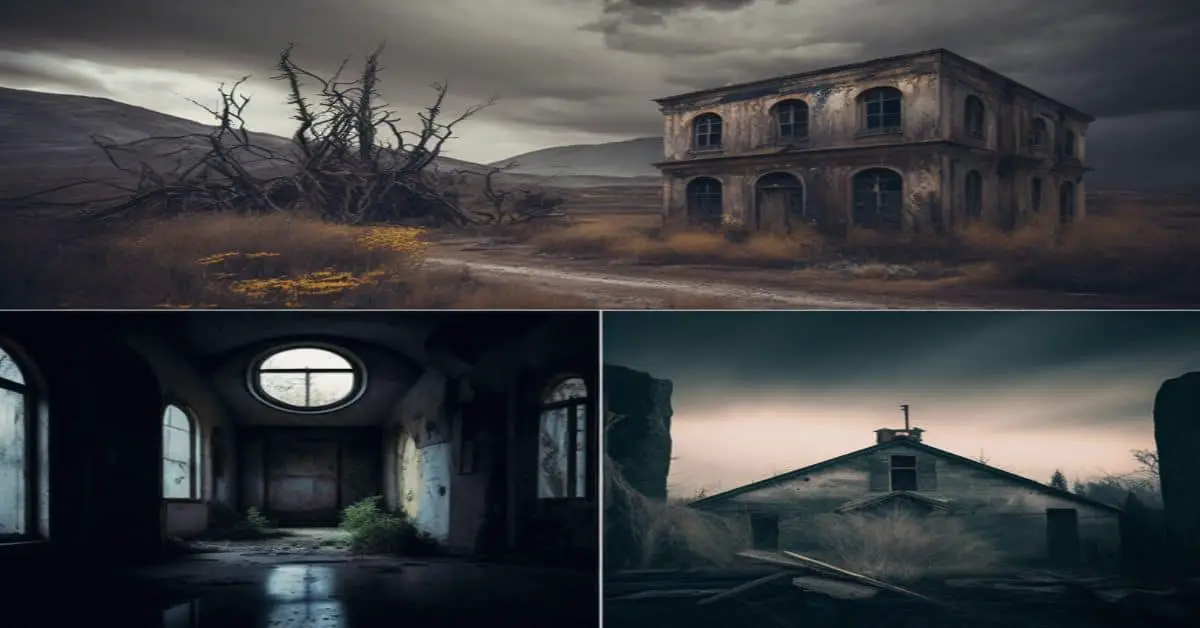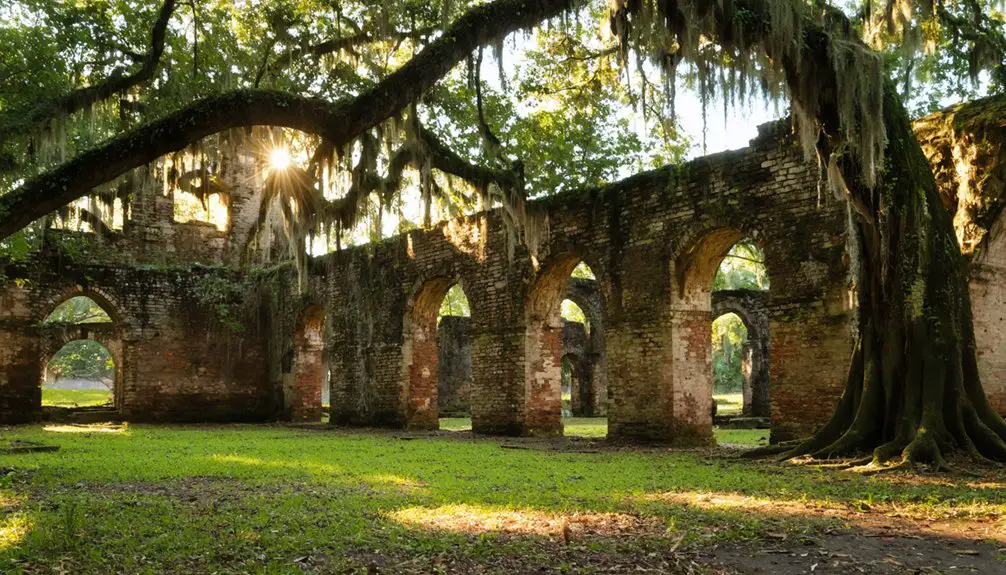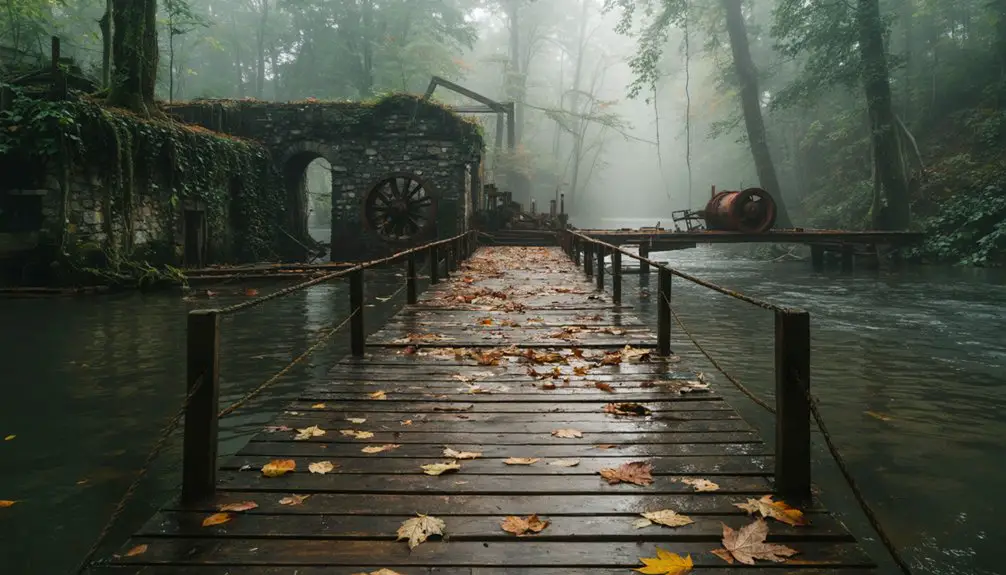North Carolina is a state full of history and impressive milestones. Many believe it was the first colony to declare independence from Great Britain and is also where the Wright brothers achieved the first successful flight of a man on an aircraft in history.
North Carolina was one of the original 13 colonies, was the 12th state to join the Union, and officially entered statehood on November 21, 1789.
There are approximately 14 ghost towns in North Carolina. Most of these ghost towns have been formed due to the creation of lakes for hydro energy. Also, deadly circumstances during the civil war have diminished the population of some places, converting them into ghost towns.
One of the most exciting ghost town myths is the one about the “Roanoke Colony.” Its story says that people living there mysteriously vanished. Today, there is no evidence of where those first settlers could have gone, giving us a great place to start our search.
Roanoke Colony, North Carolina
The Roanoke Colony was located on Roanoke Island. It is now known as Dare County, established in North Carolina, 295 miles from Charlotte. It was named after the historical Roanoke Carolina Algonquian people who inhabited the area in the 16th century.
The Roanoke Colony, or the “Lost Colony,” as it was then known, was the first “try” to create a settlement in North America by the English. It was founded in 1585 by governor Ralph Lane, but it failed.
Due to the lack of supplies and poor relations with the Native Americans, Lane abandoned the Island provoking another settlement on the same Island in 1587 by John White.
White went to England in 1588 to get supplies for his new colony with approximately 112-121 people, including his daughter and granddaughter, Virginia Dare. He came back to Roanoke in 1590 due to the Anglo-Spanish war.
Although he found the settlement fortified, it had been abandoned with the word “CROATOAN” painted, and the houses and buildings were dismantled. John White couldn’t investigate his family’s disappearance or the other settlers due to an incoming storm.
The fate of these people remains unknown. Several archeologists and investigators have dedicated their lives to discovering what happened in this place. Still, no one seems to conclude and solve this mystery that has been on since 1590.
There are rumors; one group of researchers states the Native Americans had murdered the Roanoke Settlers. Other historians established they wanted to seek refuge with the Croatians because they had no supplies and moved inland. More evidence reveals that moving inland and living among the Croatoan Indian tribe seems more likely than a murderous attack.
This event inspired the sixth episode of American Horror Story and a documentary on the History Channel, National Geographic, and other essential TV shows.
Buffalo City, North Carolina
Buffalo City is located in East Lake township, Dare County, North Carolina, approximately 355 miles from Charlotte. The history of Buffalo city dates from the 1870s to the 1950s; founded after the Civil war mainly by African American laborers and Russian Immigrants.
It was a wealthy town whose principal business was logging and moonshine; its logging operation was the largest in Northeastern North Carolina.
There was also a post office, schoolhouse, general store, a hotel, and almost 100 miles of railroad track. Today, these buildings are covered with grass; the only remnants are road signs and rusted rails.
In 1908 the Dare company purchased the forest, and the logging industry prospered throughout the 1910s and early 1920s. Due to its significant logging work, Buffalo City’s forest was heavily depleted, and the companies stopped their operations. Following the company closures, the town’s name changed to Daresville.
Today, former residents and their descendants gather at the East Lake United Methodist Church every September to celebrate the vanished town.
Glenville, North Carolina
This ghost town is particular because it lies beneath Glenville Lake and can only be seen above the water once a year when the lake is shallow. Glenville is located in south-central Jackson County, 165 miles from Charlotte. The settlement began in 1827. In 1856, the Hamburg post office was established, and in 1891 it was incorporated and named “Hamburg.”
It was once the largest town in Jackson County and the first one with a private school, specifically in Cullowhee. Today that college is known as Western Carolina University.
In 1940, a massive inundation caused severe damage, destroying almost all the buildings on the north side of the river. In 1941, an electric company called Nantahala Power and Light destroyed the original town to build a Hydroelectric dam, forming Lake Glenville with the Tuckasegee River.
A part of Western Carolina University was also affected because of the flooding, making the school lakeside. Still, the university has had some developments to control flooding in the area.
Near Lake Glenville, several vacation homes are now popular tourist destinations, and have many multimillion-dollar homes around the lake. Lake Glenville also has fishing tournaments due to the rare fish species in it.
Mortimer, North Carolina
Mortimer is a ghost town in Wilson Creek Township, Caldwell County, northwestern North Carolina. It is 95 miles, almost two hours, from Charlotte.
Mortimer had around 800 people living there before the town flooded in 1940 and was quickly abandoned. Today, you can still see several foundations of buildings and machinery from the mill.
Before the flooding of 1940, a fire destroyed the town in 1916. The fire burned from Grandfather Mountain to Wilson Creek and was immediately followed by inundation considered the worst in Caldwell County history.
This town used to have numerous houses, a church, a school, railroads, a large hotel, and even a motion-picture facility. It was so prestigious and admirable that the former United States president, Theodore Roosevelt, visited the town in 1906 and stayed at Mortimer’s Laurel Inn.
Today, only about 16 families live along the stream, and the remaining mountain area is considered public land by the United States Forest Service.
Henry River, North Carolina
The ghost town of Henry River is located in Burke County, North Carolina, about 60 miles from Charlotte.
The remaining buildings are traces of the industrial heritage of Henry Mill Village. Around 1904, it had a mill, dam, water and fire protection systems, and walkways in its glory. In 1912, a steel bridge was built across the Henry River; it is said it was the highest bridge in the state and one of the few not destroyed by the 1916 flood. This bridge was replaced by a new concrete bridge in 1960.
The Henry River Mill ran on water power, and in 1914 a steam plant was installed. Then in 1926, it was converted to electric power. By the time it shut down in the late 1960s, the mill had 12,00 spindles and produced fine comber yarn for lace.
It was abandoned since the 1970s until the movie “The Hunger Games” was released in 2011. The Henry River Ghost town is primarily known as the location for District 12 in the Hunger Games movies and was listed on the National Register of Historic Places in 2019. Before planning a trip to the former town and filming location, check with the owners since it is private property.



